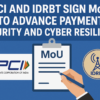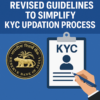If compliance is weak, disruption is assured. Adv. Aditya Goenka, Group Executive VP – Head Legal & Compliance at YES Securities, shares his insights on complexities, challenges and culture relating to compliance:

Babu Nair: What are some of the key challenges that compliance managers face?
Aditya Goenka: Managing compliance is full of complexity, institutions need to stay on top of the regulations to maintain their reputation and integrity. As the financial services industry contributes to both the economy and society at large, they must stay safe from fraud, theft, security concerns and reputational damage. Institutions that put technology in place to help keep up with changing regulations are winning in the marketplace. Six key compliance challenges are as below:
1. Management Unawareness: Common compliance challenge is the lack of awareness among top management regarding the importance of compliance. Senior executives are unaware of or do not prioritize compliance, and this creates a trickle-down effect throughout the organization. The absence of a compliance-oriented culture can lead to a lax attitude towards regulatory requirements. This ignorance result in non-compliance, including failure to implement necessary policies and procedures, train employees, or allocate sufficient resources for compliance activities.
2. Changing Regulations & Growing Uncertainty: The biggest compliance challenges is keeping up with changing regulations, especially after the economy rebounded following the pandemic. We need to keep trying to maintain pace with rapid regulatory change while simultaneously trying to deliver value for customers and reduce operating costs.
3. Improving Risk Control: It’s difficult to manage various risks, (credit, liquidity and market). Risk and compliance can be improved by updating the company’s digital systems and creating analytics-aided techniques, such as digital credit assessment, establishing systems that provide advanced early-warning, developing thorough stress testing for their systems and measuring credit-collection analytics
4. Ensuring Privacy & Data Security: Maintaining extremely sensitive data are required to protect from unauthorized access. Ensuring overall privacy and data security as cyber threats are constantly evolving and becoming more sophisticated.
5. Environmental, Social & Governance Issues: In today’s competitive marketplace, providing transparency and accountability for the products and services to customers, stakeholders and employees expect. The challenge is that the expectations these groups have around transparency and accountability are constantly changing, and financial institutions must stay ahead to remain competitive.
6. Preventing Fraud & Instilling Trust: Cyberattacks is a serious risk, preventing fraud can be challenging, as financial criminals constantly find new ways to evade detection. Consistency of branding is crucial in maintaining trust with customers. Businesses that have the ability to quickly pivot and implement new messaging in the midst of the crisis, such as sharing updated and more compassionate business practices.
How do you balance the need for robust compliance with fostering a culture of innovation and agility within the company?
Innovation is often seen as the driving force behind business growth. When businesses innovate, they differentiate themselves from their competitors, offering unique solutions to customer problems. This can lead to increased market share and profitability. It’s also important to remember that innovation isn’t limited to products or services. It can apply to processes, business models, or even workplace culture.
Fostering innovation and encouraging risk-taking can significantly impact employee engagement and satisfaction. A workplace that values creativity and is open to new ideas promotes a sense of ownership and pride among employees. It encourages them to think out of the box engage with their work on a deeper level, and find fulfilment in their roles. When employees see their ideas being valued and their risks rewarded, it leads to greater job satisfaction and loyalty.
So, the correct way to balance quality culture with innovation and agility within the organization is to assess your current state, align your vision and values, empower your people, streamline your processes, review your results and adapt to change.
With the increasing complexity of regulations, how do you ensure your team stays up-to-date and informed?
Train your team with regular refreshers to help them spot red flags of money laundering and financial crime:
1. Conduct risk-based due diligence at the start of the business relationship and on an ongoing basis.
2. Explore how AI & AML tools can support and enhance your role in combating money laundering and other financial crime.
3. Review controls and ensure they are proportionate to the risks.
4. Remember, this also links to ESG – as we have a moral duty to rid society of drugs, gun crime, trafficking, organized crime, etc, which fuel money laundering and terrorist financing.
5. Avoid tipping off anyone suspected of money laundering or terrorist financing – there’s a 2-year penalty if you break the rules.
What role do AI & ML and data analytics play in compliance programs?
The challenge for any organization is to maintain the relevance of a compliance program following its launch and to measure its effectiveness. Data Analytics benefits a compliance program by standardizing, simplifying, and reducing the administrative burden, whilst providing greater insight and timely identification of non-compliance or potential fraud to effect change.
Data Analytics can contribute at each stage of a compliance program. Rules-based analytics are highly effective at monitoring compliance with internal controls, while statistical analysis identifies patterns and highlights irregularities. Risk scoring augments risk assessments, while benchmarking compares compliance risks against industry sectors or regulatory standards to identify high-risk areas.
Machine learning algorithms can be trained to identify patterns and anomalies which may not otherwise be observed by traditional methods. As new fraud schemes emerge, they can also be retrained to detect these, making it more effective over time.
Have you encountered any particularly challenging compliance scenarios in your career? If so, how did you approach them?
Here are 4 key obstacles faced by a compliance officer:
Lack of In-house availability of expertise: The list of acts and compliances is highly dynamic and needs periodic refresh. There are over 2000 regulatory websites of central & state regulators and local governments which can publish notifications, circulars, gazettes on any given day. These result in over 2500 regulatory changes in a year to various compliance requirements such as forms, dates, calculations, procedures among others leading to critical changes to compliance obligations of a company. Unfortunately, there are no proactive and automatic notifications from the government that compliance officer receive to quickly assess the impact of changes and make relevant corrections.
Accurate list of Applicable Acts and Compliances: The number of acts and applicable compliances for an organization in India range from a few hundred to a few thousand. These compliances span across 7 different compliance categories, 1536 Acts, 69,233 compliances and 6618 possible filings. Compliance officers do not have one list of all applicable compliance for their business. In addition, businesses are highly dynamic and constantly add capacity, markets and equipment.
Increasing Penalties: The regulations laid down provisions for criminal proceedings and potential jail term for KMPs and directors for non-compliance. In addition, there have been several instances of loss of clients, board reprimand, severe financial penalties, lock down and business closure, frozen bank accounts among others for poor compliance. Investors, board, shareholders, customers and employees are holding companies increasingly accountable for corporate governance, risk management and compliance.
Manually Intensive Compliance Program: Lack of tools to digitize the complexity of their compliance burden.
Digitization has taken the world by storm. Data is the new oil’ The power of cloud, mobile and analytics are transforming value chains and business models. Digital tools help organizing, managing, analyzing data for greater transparency, accountability and timely decisions.
What are the key strategies for building a strong compliance culture within a company?
1. Establish a Compliance Framework
2. Conduct Risk Assessments
3. Foster a Compliance Culture, system driven processes
4. Implement Compliance Technology Solutions
5. Engage External Expertise with regular internal audits
6. Collaborate with Regulatory Authorities & stay updated with changes
Regulatory compliance is a critical challenge that corporations face in today’s complex business environment. By adopting effective solutions, businesses can navigate the regulatory landscape, mitigate risks, and ensure compliance. Establishing a comprehensive compliance framework, conducting risk assessments, fostering a compliance culture, leveraging technology, engaging external expertise, and collaborating with regulatory authorities are essential steps towards achieving regulatory compliance. By embracing these strategies, businesses can not only meet their legal obligations but also protect their reputation, gain a competitive edge, and build trust with stakeholders in an increasingly regulated world.
Read more:
Fastracking Insurance for all – Govt, Regulator & Insurers Team Up

Growing Urgency of Cybersecurity: Navigating Digital Risks in Insurance








